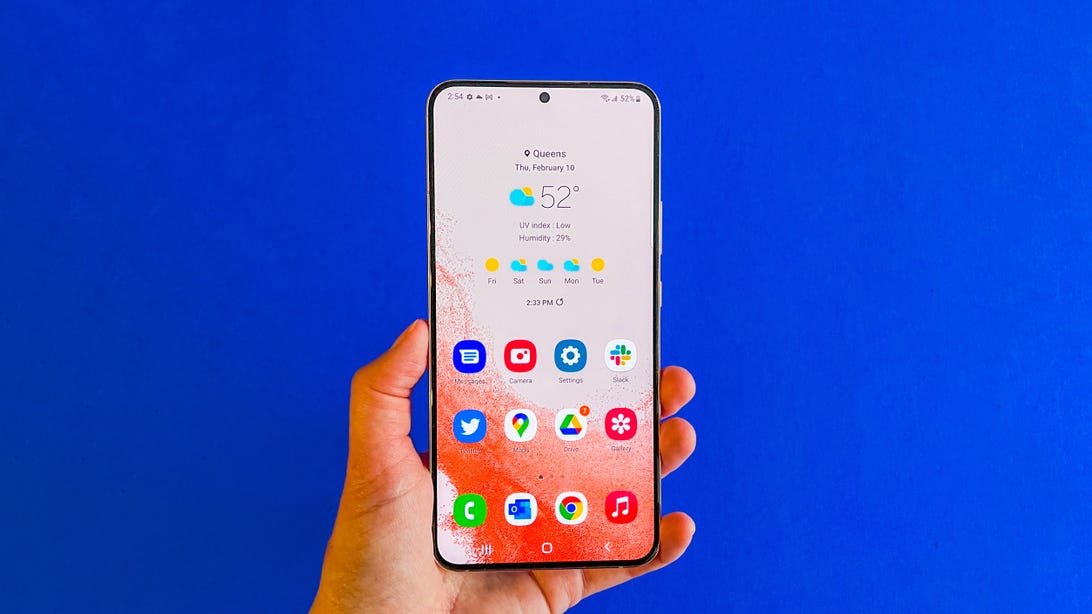
The Samsung Galaxy S22 Plus
Lisa Eadicicco/CNETIt’s easy to overlook the Galaxy S22 Plus. After all, it’s not the cheapest new phone in Samsung’s Galaxy S22 lineup since it starts at $1,000 (£949, AU$1,549), compared to the $800 (£769, AU$1,249) Galaxy S22. But it also doesn’t have the Galaxy S22 Ultra’s distinguishing features, which include the S Pen stylus and quadruple-lens camera. So where does it fit in?
It’s simple: The Galaxy S22 Plus is a bigger version of the Galaxy S22. It’s for people who prefer phones with large screens, but don’t want a device that’s as gigantic — or expensive — as the 6.8-inch Galaxy S22 Ultra, which costs $1,200 (£1,149, AU$1,849). The Galaxy S22 Plus’ 6.6-inch screen strikes the right balance of providing more screen space without feeling overwhelming. In fact, it might be my favorite phone in the Galaxy S22 trio.
The Galaxy S22 lineup comes with a newer processor, some camera improvements and a fresh design. These are incremental changes, but if you’re upgrading from a phone that’s more than two years old, you’ll surely appreciate them. The only differences between the Galaxy S22 and Galaxy S22 Plus are the latter’s bigger screen and battery, faster 45-watt charging and ultrawideband support.
That said, the Galaxy S22 Plus isn’t perfect. The battery life could be better, and I’d like to see more new photography features that leverage the improved camera.
The Galaxy S22 Plus launches on Feb. 25 alongside Samsung’s other new phones. This review is based on my experience using it for several days.
Samsung’s Galaxy S22 phones get a design upgrade
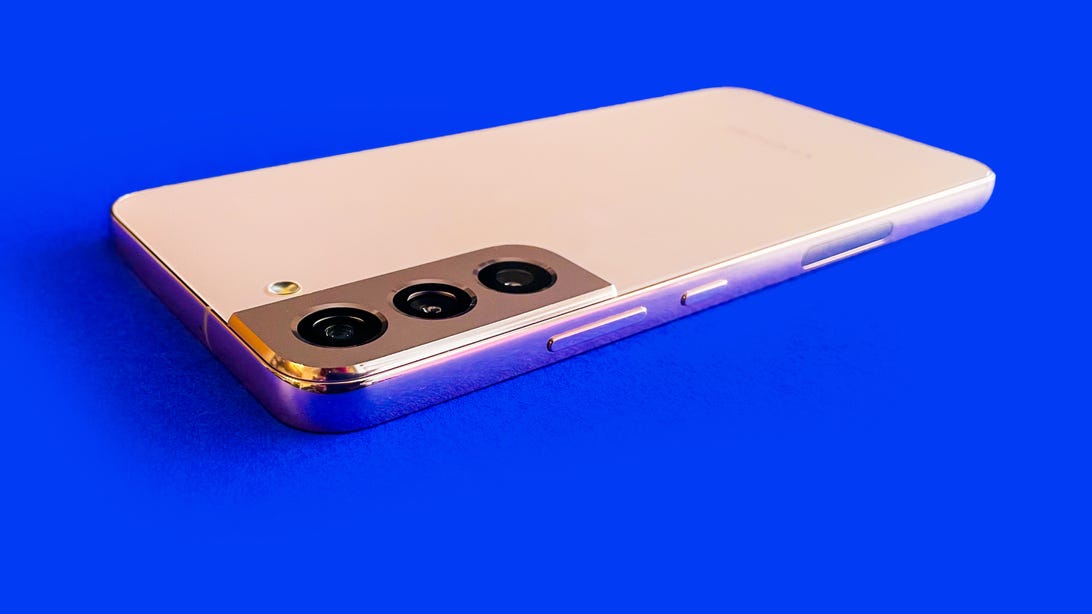

Samsung’s Galaxy S22 Plus
Lisa Eadicicco/CNETThe first thing you’ll probably notice about the Galaxy S22 Plus is its new look. The regular S22 and Plus both have a glass and metal design that feels more premium and elegant than last year’s devices, which I appreciate even though I’m sure most people will cover it with a case. The Galaxy S21 has what appears to be a brushed metal finish on the back, whereas the new phones have a look that resembles frosted glass. It feels a bit like the iPhone 13 Pro.
But it’s the Galaxy S22 Plus’ size that makes it stand out in Samsung’s new lineup. It’s much easier to hold and operate with one hand than the Galaxy S22 Ultra, which feels like a mini-tablet by comparison. At the same time, the S22 Plus feels substantially bigger than the Galaxy S22, which has a 6.1-inch screen. Both phones are also a little bit smaller than last year’s Galaxy S21 and Galaxy S21 Plus, which had 6.2-inch and 6.7-inch screens respectively. I could see the S22 Plus being ideal if you do a lot of reading or video watching on your phone but don’t want to splurge on the $1,200 S22 Ultra.
The Galaxy S22’s display quality hasn’t changed much from last year. Like the S21 and S21 Plus, the new phones come with an FHD Plus Dynamic AMOLED screen. The only major difference is that Samsung says the screens on the Galaxy S22 Plus and S22 Ultra have the brightest of any Galaxy phone yet.
I don’t have an S21 Plus, but the Galaxy S22 Plus seemed noticeably brighter than last year’s regular S21 when viewing the same content on both devices side by side at their maximum brightness level. It also beat the Pixel 6 Pro by a wide margin when it comes to brightness.
Samsung also added a new display feature called Vision Booster to the Galaxy S22 lineup. Like Apple’s True Tone, Vision Booster should match the S22’s display to the lighting in your surroundings. However, I didn’t notice much of a difference compared to the Galaxy S21.
An improved camera with better color and contrast
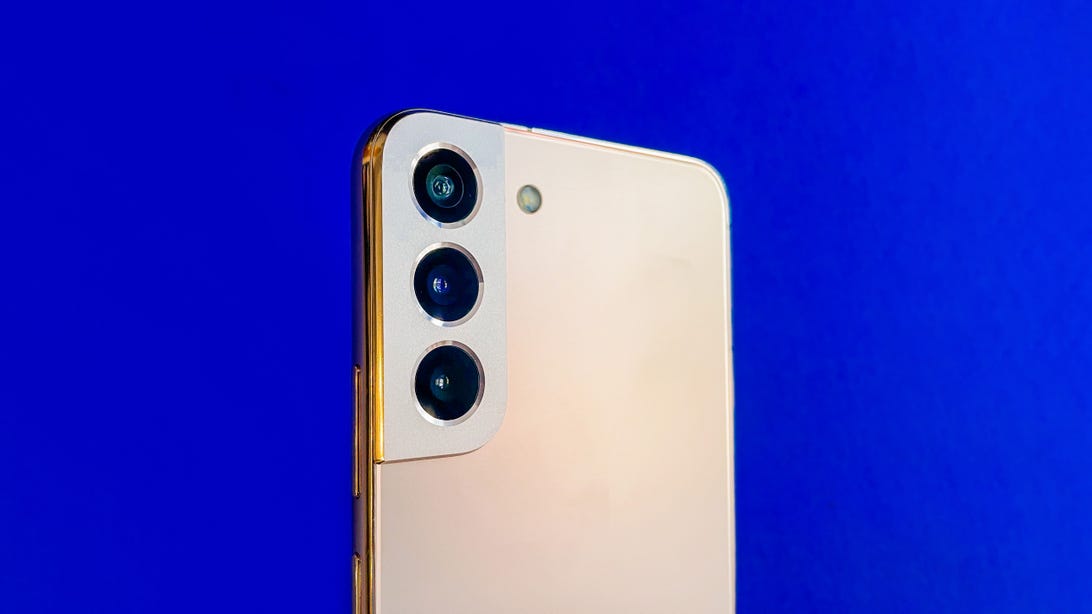

The Galaxy S22 Plus has a triple-lens rear camera. The main camera has a new 50-megapixel sensor.
Lisa Eadicicco/CNETOne of the Galaxy S22’s biggest changes is its new camera. The Galaxy S22 and S22 Plus have a 50-megapixel main camera and a sensor that’s 23% larger, compared with the Galaxy S21 and S21 Plus’ 12-megapixel main camera. Samsung also says it’s improved the way all three new Galaxy S22 devices take photos in the dark.
Samsung Galaxy S22 and S21 Camera Specs
| Galaxy S22/S22 Plus | Galaxy S21/21 Plus | Galaxy S22/21 Ultra | |
|---|---|---|---|
| Main lens | 50-megapixel | 12-megapixel | 108-megapixel |
| Ultra-wide lens | 12-megapixel | 12-megapixel | 12-megapixel |
| Telephoto lens | 10-megapixel | 64-megapixel | Dual 10-megapixel |
| Zoom | 3x optical; 30x digital | 3x hybrid optic; 30x digital | 3x, 10x optical; 100x digital |
So far, I’m seeing general improvements to the color, contrast and detail compared with the Galaxy S21. The photo of a flower bouquet shown below is the most noticeable example. The color is much more realistic in the Galaxy S22 Plus photo compared to the one shot on a Galaxy S21, especially when it comes to red and purple shades. The rose petals also look sharper and have more contrast compared to the Galaxy S21’s image. Samsung’s older phone focused more clearly on some of the other flowers in the image, like the red carnation, but I generally think the S22 Plus’ photo looks better. It also looked more colorful than the image captured on a Google Pixel 6 Pro.
Galaxy S22 Plus


A photo taken with the Galaxy S22 Plus’ 50-megapixel camera.
Lisa Eadicicco/CNETGalaxy S21


The same photo taken with the Galaxy S21.
Lisa Eadicicco/CNETPixel 6 Pro


This photo was captured on the Pixel 6 Pro.
Lisa Eadicicco/CNETWhen it comes to nighttime photography, there’s good news and bad news. First, the good: The Galaxy S22 Plus takes photos that are generally brighter, with better color in low light than its predecessor. And most importantly, it’s good at capturing photos of people in the dark, as shown in the image below.
The photo isn’t very sharp, but the skin tones and colors look more realistic than those taken on the Galaxy S21 and Pixel 6 Pro.
Galaxy S22 Plus


This photo was taken in a dark room using the Galaxy S22 Plus.
Lisa Eadicicco/CNETGalaxy S21


This one was taken on the Galaxy S21.
Lisa Eadicicco/CNETPixel 6 Pro


And here’s the Pixel 6 Pro’s version of the same photo.
Lisa Eadicicco/CNETNow for the bad news: The Galaxy S22 Plus struggles to focus sharply on still objects in the dark, just like the Galaxy S22 Ultra. Take a look at the photos of the owl kitchen timer below, which was taken in my apartment with all the lights turned off.
Galaxy S22 Plus


The Galaxy S22 Plus has trouble focusing on objects in dark conditions.
Lisa Eadicicco/CNETGalaxy S21
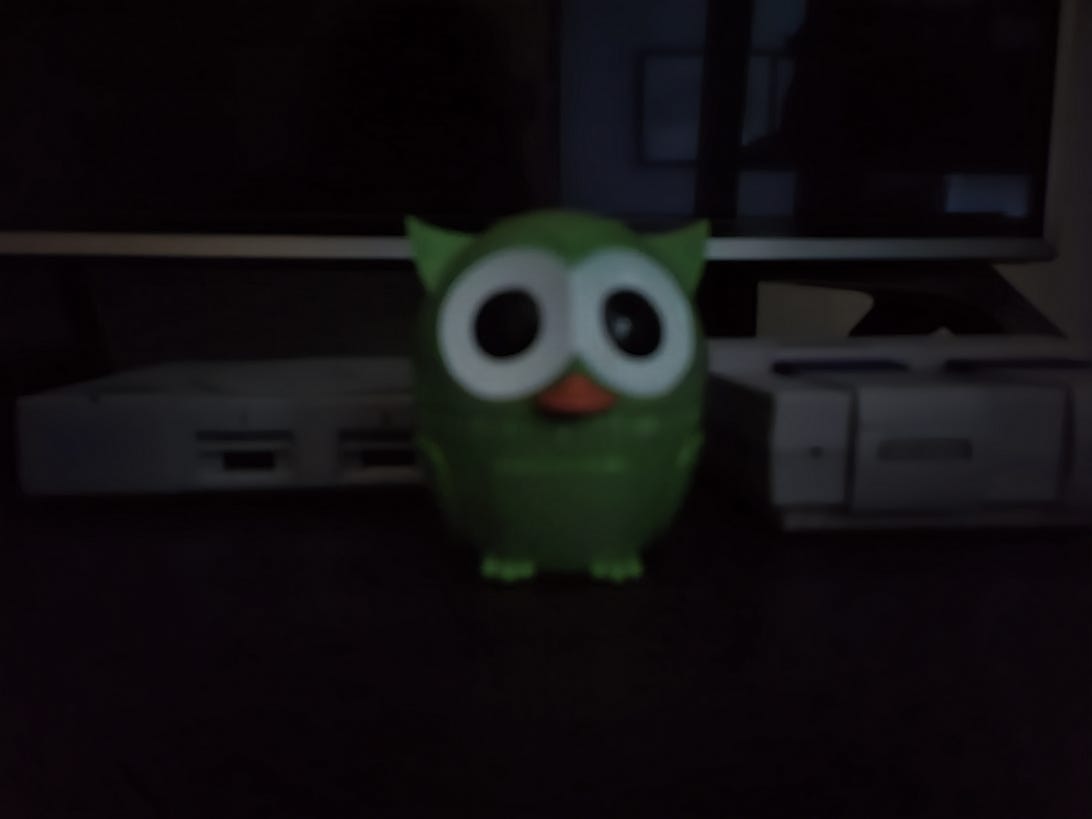

The Galaxy S21’s photo is also out of focus, and it’s a little darker than the Galaxy S22 Plus’.
Lisa Eadicicco/CNETPixel 6 Pro


The Pixel 6 Pro’s image is much sharper than the ones taken on Samsung’s phones.
Lisa Eadicicco/CNETCheck out our gallery for more photos taken with the Galaxy S22 Plus.
Aside from general photo quality, it’s also important to consider the specific photography features you get with each phone. I love Google’s Face Unblur feature, for example, which can freeze a subject’s face and capture it sharply even when a person is moving. Apple also added a macro photography mode to the iPhone 13 Pro and Pro Max, which our reviewer Patrick Holland called “one of the better implementations of a macro mode I’ve seen on a phone.”
The Galaxy S22 Plus has the same array of shooting modes as the Galaxy S21 for the most part. That’s a little disappointing since Samsung is highlighting the camera as a major selling point for its new phones. There’s Samsung’s Expert Raw app, which captures images in the RAW format and gives photographers more control over elements like ISO, shutter speed and white balance.
But those features aren’t built into the camera and must be downloaded from Samsung’s Galaxy Store. And since a beta version of the app was available for the Galaxy S21 Ultra in Korea, it wouldn’t be surprising to see Samsung expand availability to other phones in the future.
Solid performance and average battery life


Samsung’s Galaxy S22 Plus
Lisa Eadicicco/CNETThe Galaxy S22 lineup runs on Qualcomm’s new Snapdragon 8 Gen 1 chip in the US and other markets where Samsung’s Exynos chip isn’t available. Performance is just as snappy as you’d expect from a $1,000 phone; games like the first-person shooter “Shadowgun Legends” ran smoothly, and apps launched quickly. Scrolling through news feeds, the app drawer and the settings menu also felt fluid, thanks in part to the S22’s 120Hz display.
But none of that is surprising. Processor upgrades are more about enabling new features, especially camera-related ones that require a lot of processing, rather than improving raw performance.
Still, the Galaxy S22 scored about the same as the Galaxy S21 in benchmarks that test general computing and graphics performance. The iPhone 13 Pro scored higher on Geekbench 5, the general performance benchmark, but lower on 3DMark Slingshot Unlimited, which tests graphics processing.
Geekbench 5 Single Core
Galaxy S22 Plus
Samsung Galaxy S21
Apple iPhone 13 Pro
Note:
Higher scores are better.
Geekbench 5 Multicore
Galaxy S22 Plus
Samsung Galaxy S21
Apple iPhone 13 Pro
Note:
Higher scores are better.
3DMark Slingshot Unlimited
Galaxy S22 Plus
Samsung Galaxy S21
Apple iPhone 13 Pro
Note:
Higher scores are better.
As for battery life, my Galaxy S22 Plus has been lasting for about a day and a half in everyday use. But battery life can always vary depending on how you’re using your device. I streamed music for about 20 minutes and used the phone sporadically throughout my day to send text messages, check email and play games.
If you’re streaming a lot of video, taking video calls and playing games often, you’ll probably see the battery drain faster. I’ve also had the refresh rate set to 120Hz throughout my time using the device, which also impacts battery life.
In CNET’s battery test, which involves continuously playing video with the brightness set to 50% in airplane mode, the Galaxy S22 Plus performed acceptably but not great. It lasted for 18 hours and 38 minutes, surprisingly outlasting the Galaxy S22 Ultra (18 hours and 11 minutes).
But the iPhone 13 Pro lasted significantly longer at 22 hours and two minutes. According to our test results, the Galaxy S22 Plus’ battery life is more comparable to the iPhone 13 Mini’s, which lasted for 18 hours and 19 minutes. Since the Galaxy S22 Plus is the same price as the iPhone 13 Pro, it would have been nice to see similar results. (The Galaxy S22 Plus and iPhone 13 Pro had the screen set to adaptive 120Hz during this test.)
Both the Galaxy S22 Plus and Ultra come with 45-watt fast charging, which sounds like a nice perk considering the regular Galaxy S22 and entire Galaxy S21 lineup only support 25-watt fast charging. Unfortunately, you need to buy a specific charger, which is currently listed at $50 on Samsung’s website, to make use of it. (You can find it on Amazon for $39, but there aren’t many left in stock.)
The Galaxy S22 runs on Samsung and Google’s newest software
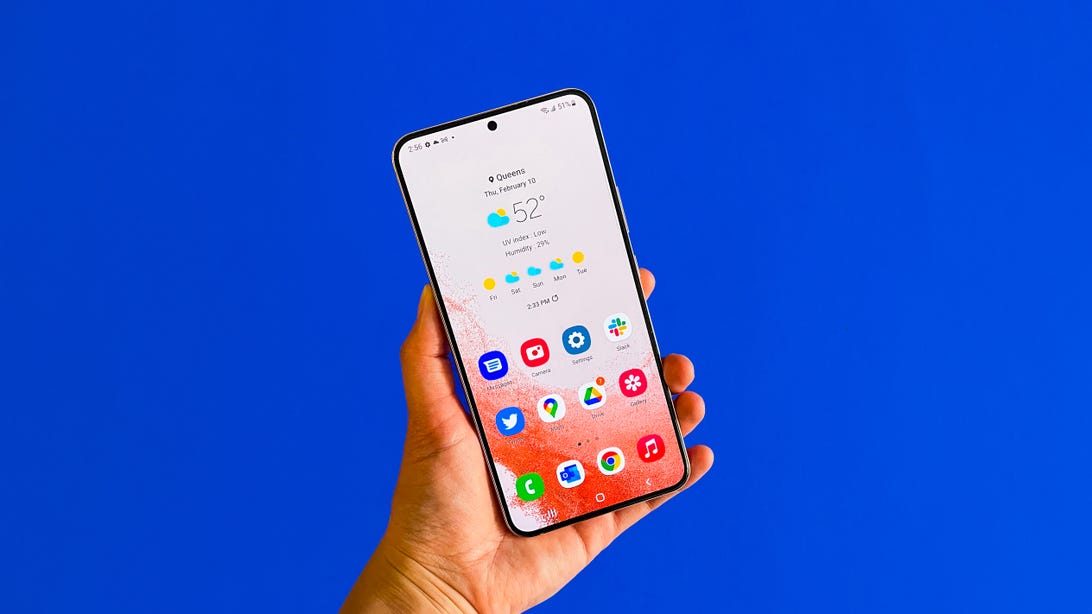

The Galaxy S22 lineup comes with Android 12 and Samsung’s One UI 4.1 software.
Lisa Eadicicco/CNETSamsung’s Galaxy S22 phones come with Android 12 and One UI 4.1, the latest version of Samsung’s software. One UI 4.1 is an iterative update to One UI 4.0, the bigger system-wide update Samsung launched in late 2021. The new software brings a bunch of cosmetic flourishes like custom color palettes and a more consistent look for widgets, as well as more privacy controls for managing app permissions.
The update isn’t exclusive to S22 devices, but it’s nice that buyers will get the newest software right out of the box. One of my favorite One UI 4.0 updates is the new camera viewfinder, which specifically shows the available zoom options rather than generic icons for the wide, telephoto and ultrawide lenses.
Samsung is also working with Google to bring more features to the search giant’s Duo video-chatting app. On the Galaxy S22 lineup, you can share your screen or content from specific apps such as Google Maps, YouTube or the Samsung Notes and Gallery apps on a group video call. It seems like a clear effort on Samsung and Google’s part to compete with the SharePlay feature for FaceTime that Apple launched in iOS 15.
This is all great news for Samsung device owners. But it’s a line that Google will have to tread carefully, since bringing too many of its own features to Samsung phones could detract from the Pixel’s appeal.
Samsung also announced that the Galaxy S22 lineup and other recent phones will support Android OS software updates for four generations. Google’s Pixel 6, by comparison, only supports three years of Android OS updates but five years of security updates. Other Samsung devices that are eligible for this four-year Android OS support include the Galaxy S21 family, Galaxy Z Fold 3, Galaxy Z Flip 3 and Tab S8 series.
The bottom line
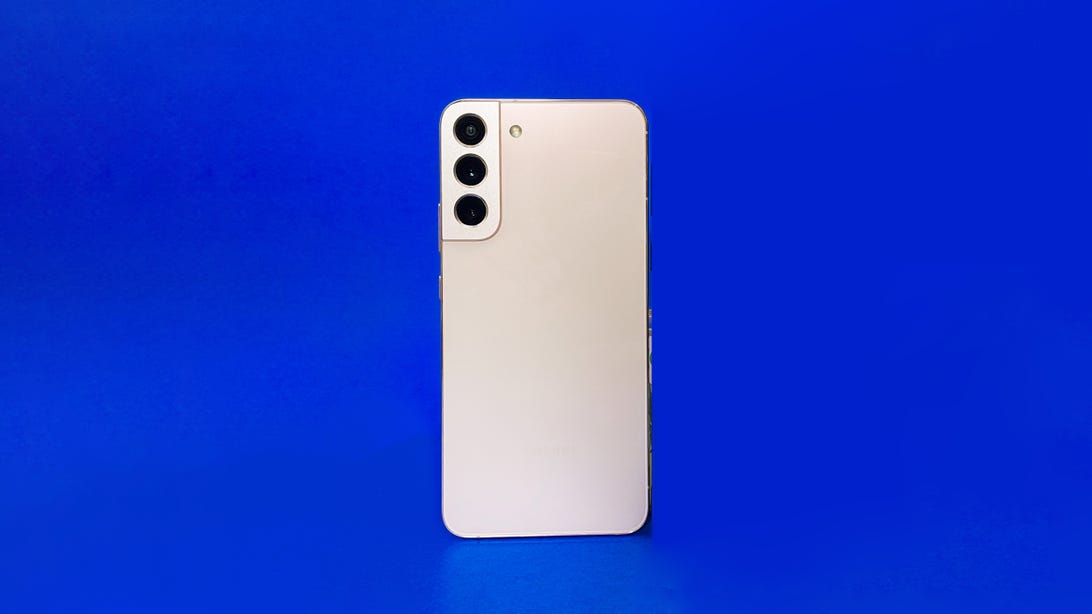

Samsung’s Galaxy S22 Plus
Lisa Eadicicco/CNETThe Galaxy S22 Plus’ camera is noticeably better than last year’s Galaxy S21, the size is just right for people who prefer larger screens and the new design makes it feel fresh. That said, if you have a Galaxy S21, it’s not worth spending $1,000 to upgrade. Even though I appreciated the camera enhancements, these are all just iterative updates for the most part. However, if you’re upgrading from an older phone like the Galaxy S10 generation or earlier, you’ll find a lot to love about the S22 Plus.
At the same time, the Galaxy S22 Plus left me wanting more in certain areas. I was hoping to see additional photography features that make more use of Samsung’s improved camera. I’d also like to see battery test results from the S22 Plus that more closely match the similarly priced iPhone 13 Pro. And the $1,000 price can still make the Galaxy S22 Plus a tough sell at a time when midtier phones in the $600 to $700 range, like the Pixel 6 and Galaxy S21 FE, are improving.
If you’re eyeballing Samsung’s new phone, there’s a good chance you may be deciding between the Galaxy S22 Plus and $900 Pixel 6 Pro. After all, they’re both around the same price and offer similar hardware. The S22 is $100 more expensive but offers a brighter screen and a camera that can produce richer color in some scenarios. But the Pixel 6 Pro is $100 cheaper, has a larger screen and gets Android updates faster than non-Pixel phones.
All told, the Galaxy S22 Plus is a solid upgrade for Android users looking to replace an aging device. If you want a device with a bright, moderately sized screen and a high-quality camera, the S22 Plus won’t disappoint.




